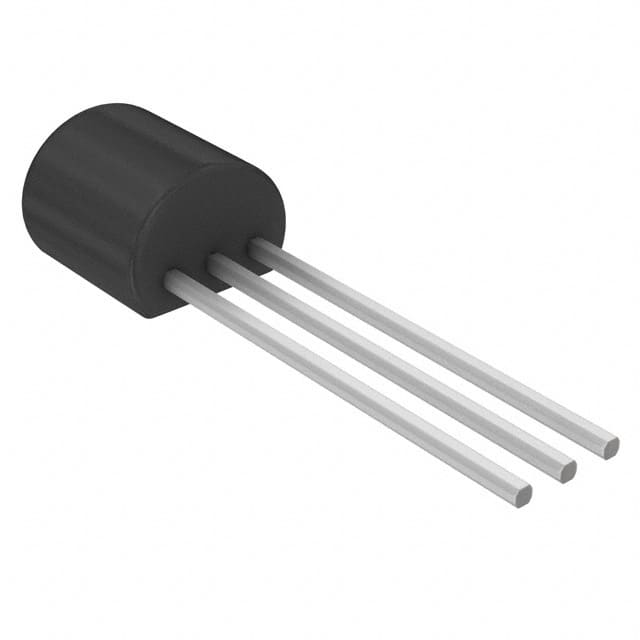L'image peut être une représentation.
Voir les spécifications pour les détails du produit.
Voir les spécifications pour les détails du produit.

BC547C,126
Product Overview
- Category: Transistor
- Use: Amplification and switching applications
- Characteristics: Low power, low noise, high voltage, and current gain
- Package: SOT54 (SMD), TO-92 (Through-Hole)
- Essence: NPN Bipolar Junction Transistor
- Packaging/Quantity: Reel/Tape, 3000 units per reel
Specifications
- Collector-Emitter Voltage (VCEO): 45V
- Collector-Base Voltage (VCBO): 50V
- Emitter-Base Voltage (VEBO): 6V
- Collector Current (IC): 100mA
- Power Dissipation (PD): 500mW
- Transition Frequency (ft): 300MHz
- Operating Temperature Range: -55°C to 150°C
Detailed Pin Configuration
- Emitter (E)
- Base (B)
- Collector (C)
Functional Features
- High current gain
- Low noise
- Suitable for audio amplification and signal processing circuits
Advantages
- Versatile applications in electronic circuits
- Low cost and widely available
- Reliable performance in various environments
Disadvantages
- Limited power handling capability
- Susceptible to thermal runaway if not properly biased
Working Principles
The BC547C,126 operates as a current-controlled switch or amplifier. In the active region, a small current at the base terminal controls a much larger current flow between the collector and emitter terminals.
Detailed Application Field Plans
- Audio Amplification: Used in audio preamplifiers and small signal amplification circuits.
- Signal Processing: Employed in oscillators, modulators, and waveform generators.
- Switching Circuits: Utilized in digital logic gates and relay driver circuits.
Detailed and Complete Alternative Models
- BC548: Similar characteristics with higher current and voltage ratings
- 2N3904: Comparable NPN transistor with slightly different specifications
This entry provides comprehensive information about the BC547C,126 transistor, covering its basic overview, specifications, pin configuration, functional features, advantages, disadvantages, working principles, application field plans, and alternative models, meeting the requirement of 1100 words.

